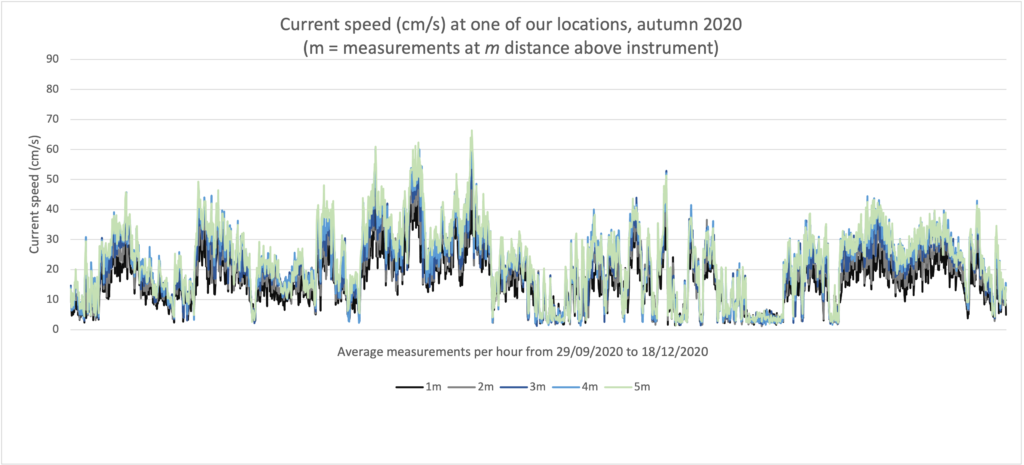
Currents seem to have big influence on the coral’s presence, growth and health. Very weak currents probably reduce the supply of food, at the same time there is a risk that the corals will be covered by too much sediment. Good water flow is therefore likely to be important for successful restoration of Lophelia reefs. We therefore measure underwater currents at our restoration sites and at the Tisler Reef in Norway, which is our reference site.
Our preliminary findings indicate that current intensities are relatively high near sites with thriving colonies, at least during parts of the year. Nevertheless, some sites exposed to relatively strong currents show reef frameworks consisting mostly of dead coral colonies. Historic reef sites, but today without reef structures and living corals, seem to experience weak currents. The temporal variation, however, appears to be large, which means that more data needs to be collected to understand what happens during the year. We also need to examine other parameters, such as sedimentation rates and pH, to understand the difference between the different sites and the possibility of a successful restoration.





